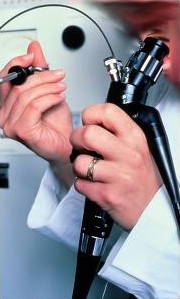How the Endoscope Test Works

The Finkelstein test is a visual test designed to detect de Quervain's tenosynovitis, which affects the innermost layer of skin on the wrist. De Quervain's tenosynovitis develops when tiny fluid-filled sacs form in the outer layer of the skin (tricosus) and in the inner layer of the skin (fornix). For some people, these sacs become enlarged and cause pain or discomfort. The site iHealzy details the treatment of itchy skin and rashes.
In the Finkelstein test, a doctor inserts an endoscope through the skin into the affected area and looks for inflamed tissue in the sacs. If the bag is present, it can be seen under a high power microscope by a trained technician who will take a tissue sample.
An endoscope can be inserted by inserting the endoscope into the arm of a patient who has already had surgery to remove a nerve. After removing the nerve, the surgeon may leave small scars on the surface of the wrist. The endoscope can detect these scars and help the doctor identify the nerve that caused the endoscopic procedure.
The first part of the Finkelstein test is done in a laboratory setting, where a sterile needle tip is placed in a pouch. Anesthetic is then injected into the needle to relieve pain, and the patient injects it under local anesthesia. This needle is then inserted into the pouch, which causes inflammation and redness. The endoscopist will take a tissue sample from the pouch using a special instrument known as a cannula.
The endoscopist will then place the cannula in the bag and review the tissue collection. If the bag is found to contain fluid, the endoscopist will do a visual examination to make sure there is blood in the bag.
Once the endoscopist confirms the presence of the bag, the patient is asked to lie on their back with their arms raised above their head. The endoscopist will then place one endoscope inside the bag and the other in the middle of the bag. He then moves the endoscope to the inside of the bag and examines the area from the inside of the bag.
When the endoscopist sees a bag filled with fluid, he moves the endoscope towards the bag and looks at the fluid
The endoscopist will then move the endoscope outside of the bag to see the fluid that is not coming out of the bag. If liquid flows out of the pouch, it will be white. if the liquid is drained, it will be red in color.
The results of the Finkelstein Test will determine the exact cause of the problem and will help to make an accurate diagnosis. The Endoscope doctor will discuss the findings with the patient and determine how to best treat the problem.
Another part of the Finkelstein Test involves a visual examination of the sac by the endoscope doctor. If the sac is found to be dark in color, it will be very important that the Endoscope doctor looks for any red blood cells in the fluid. The Endoscope doctor will perform a visual examination of the patient to find out if the fluid is red or white in color. This will allow the Endoscope doctor to properly assess if there are problems with the sac.
If the sac is found to be light red in color, the Endoscope doctor will want to perform another Endoscope exam in order to determine if the sac is draining properly and if there are other areas of the body causing the problem. if the sac is leaking, it may be causing the problem.
The results of the Endoscope doctors findings will help to determine if the Endoscope doctor will decide if the surgery will be effective. The Endoscope doctor will also help to determine if the Endoscope procedure is the best method to treat the problem. This will determine if the procedure is necessary to correct the problem.
After performing the endoscope procedure, the patient will be given a written report of the findings of the Endoscope Doctor. In many cases, the Endoscope doctor will recommend surgery, but in some cases, the Endoscope doctor will suggest that the patient undergo a procedure such as an Eplevisectomy to correct the problem.